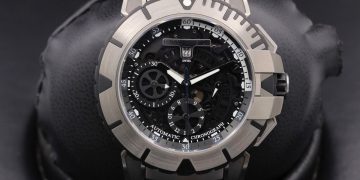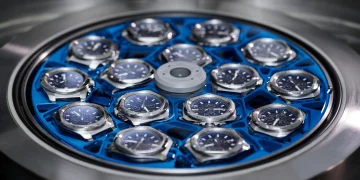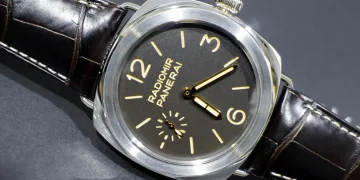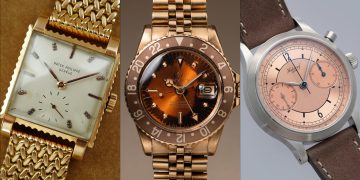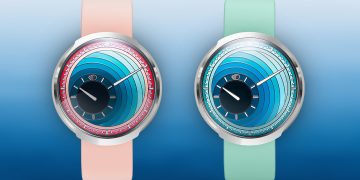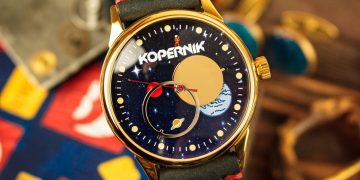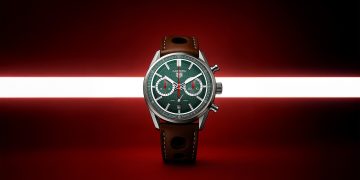Introduction:
Watches have long been admired not only for their functionality but also for their timeless craftsmanship and aesthetic appeal. A traditional mechanical timepiece, with its intricate movements and carefully crafted components, is often seen as a symbol of luxury, heritage, and personal style. However, as technological advancements continue to make their mark on the watchmaking industry, a new wave of high-tech materials has emerged, promising to make watches lighter, more durable, and resistant to the wear and tear of everyday life.
Materials like titanium, ceramic, carbon fiber, and silicon are being increasingly incorporated into both the movements and the cases of modern watches. These high-tech materials offer undeniable benefits, such as enhanced durability, scratch resistance, and lighter weight. However, their introduction into the world of traditional horology has raised a crucial question: Do these high-tech materials diminish the classic charm of watches?
In this article, we will explore how high-tech materials have influenced watchmaking and whether their application truly detracts from the timeless appeal of classic timepieces. Are these materials an advancement that improves the watch, or do they risk altering the soul of watchmaking?
1. The Classic Charm of Watches
1.1 The Appeal of Traditional Materials
For centuries, the materials used in watchmaking were relatively simple but rich in craftsmanship. Metals like stainless steel, gold, and platinum were the mainstay of watch cases, offering a certain elegance and luxury that were integral to the charm of a timepiece. Similarly, leather straps provided both comfort and style, while precious metals and highly polished surfaces created a sense of refinement.
Mechanical movements, with their intricate gears, springs, and escapements, were the heart of the traditional watch. The charm of these timepieces lay in the fact that each component was meticulously crafted by hand, resulting in a highly personalized piece of artistry. Collectors and enthusiasts valued the heritage and personal connection to these objects, as well as their emotional significance—whether handed down through generations or purchased as a symbol of personal achievement.
The combination of classic materials and time-tested designs created an iconic and sentimental appeal that high-tech materials may struggle to replicate. The warmth and weight of precious metals, the scent and feel of leather, and the ticking of a mechanical movement are not just about function—they are about experience, legacy, and emotion.
1.2 The Emotional Connection to Craftsmanship
For many watch lovers, the emotional connection to a timepiece is about more than just utility. It’s the feeling of wearing a piece of history—something that represents skill, artistry, and human ingenuity. Swiss-made mechanical watches have long been associated with the pinnacle of craftsmanship, where the design and materials used tell a story of decades or even centuries of tradition.
This emotional bond is often built on the quality of materials, the tactile sensations of the watch, and the aesthetic choices made by both the watchmaker and the wearer. The weight of a watch, the shine of polished stainless steel, and the patina that develops on leather straps over time all contribute to the timeless appeal of a classic timepiece.
2. The Rise of High-Tech Materials in Modern Watchmaking
2.1 Titanium: Lightweight and Durable
Titanium, known for its strength and lightness, has become increasingly popular in modern watchmaking. Used primarily in cases and bracelets, titanium offers a significant reduction in weight compared to traditional materials like stainless steel. This can be particularly attractive for individuals who want a comfortable and lightweight watch that can withstand the rigors of daily wear without sacrificing durability.
Titanium also has excellent corrosion resistance, making it ideal for those who lead an active lifestyle or live in humid environments. It’s also hypoallergenic, which is an important consideration for wearers with sensitive skin.
While titanium’s benefits are undeniable, it does lack the luxury feel and warmth associated with traditional materials. The cool, matte appearance of titanium may not evoke the same sense of opulence or elegance that polished stainless steel or precious metals provide. For some watch enthusiasts, this could detract from the overall charm of the watch, making it feel more like a functional tool rather than a luxurious accessory.
2.2 Ceramic: Scratch-Resistant and Modern
Ceramic has also made its mark in watchmaking, particularly for watch cases and bezels. Unlike traditional materials, ceramic is highly resistant to scratching and scuffing, maintaining its pristine appearance even after years of wear. Watches made from ceramic are often lighter and more comfortable on the wrist, offering a more modern aesthetic.
However, ceramic also has its drawbacks. The material is brittle and can crack or chip upon impact. Additionally, while its smooth finish and modern appearance may appeal to some, others may find it lacks the traditional richness of metals like gold or stainless steel. Ceramic, with its sleek and uniform texture, can sometimes appear more artificial or mass-produced, detracting from the unique, hand-crafted feel that defines traditional watchmaking.
2.3 Carbon Fiber: High-Tech and Sporty
Carbon fiber has found a place in high-performance watches, particularly in the world of sports watches and racing chronographs. Known for its strength-to-weight ratio, carbon fiber is incredibly durable and lightweight. It gives watches a high-tech, futuristic look that appeals to those seeking cutting-edge technology.
However, carbon fiber is also highly industrial in appearance and often lacks the refined beauty associated with traditional watch materials. It’s often used in watches that are designed to evoke a technical or athletic aesthetic, rather than a sense of luxury or heritage. For some, this emphasis on functionality and tech-focused design might dilute the traditional appeal of a luxury watch, making it feel more like a gadget than an object of artistry.
2.4 Silicon: Precision and Innovation
In the world of movements, silicon has made waves by offering high precision and resistance to wear. Silicon parts, such as escapement wheels and balance springs, are used in some of the most advanced mechanical movements today. They are lightweight, corrosion-resistant, and require less lubrication, enhancing the performance and longevity of the movement.
While the use of silicon in mechanical movements has undoubtedly improved their reliability and accuracy, it may also detract from the traditional romance of mechanical watchmaking. The idea of a finely-tuned movement made from precious metals and intricate mechanical parts carries a certain romanticism that silicon, with its clean, futuristic look, might struggle to match.

3. Does the Use of High-Tech Materials Diminish Classic Appeal?
3.1 The Shift from Heritage to Functionality
The introduction of high-tech materials undeniably brings several practical advantages—lighter weight, improved durability, and greater resistance to wear and tear. These benefits are especially appealing for those seeking a watch that can withstand the demands of modern life, particularly those with active lifestyles or those living in harsh environments.
However, many purists argue that the increasing use of high-tech materials could be seen as a departure from the tradition that has long defined luxury watchmaking. The luxury appeal of a traditional watch often lies in the quality of craftsmanship, the luxurious materials, and the emotional connection to the timepiece. Materials like gold, steel, and leather have stood the test of time because they carry a sense of warmth, richness, and personal connection that high-tech materials may lack.
Wearing a traditional watch, with its metallic sheen or aged leather strap, carries a sense of nostalgia, a connection to the past, and a deeper appreciation of craftsmanship. High-tech materials, on the other hand, can sometimes feel more detached from the emotional experience of watch ownership, focusing more on functionality than heritage or craftsmanship.
3.2 The Balance Between Tradition and Innovation
It’s important to note that the use of high-tech materials does not necessarily have to diminish the charm of a watch. Some brands have successfully incorporated these materials while still maintaining a sense of heritage and luxury. For example, Omega’s use of titanium and carbon fiber in the Seamaster collection balances performance and style, combining high-tech durability with the elegance of a luxury timepiece.
Moreover, high-tech materials can offer an opportunity to push boundaries and redefine what a watch can be. They allow for more innovative designs, lighter weights, and increased durability, catering to the demands of modern consumers while still retaining a sense of exclusivity and luxury.
4. Conclusion: High-Tech Materials and the Future of Watchmaking
The use of high-tech materials in modern watches has certainly changed the landscape of horology, bringing both benefits and challenges. While these materials offer enhanced durability, comfort, and performance, they also shift the focus of the timepiece from traditional craftsmanship to more functional attributes.
For some watch enthusiasts, the classic charm of a timepiece lies in its heritage, luxury, and personal connection—qualities that high-tech materials may struggle to replicate. However, for others, the innovation and practicality of materials like titanium, ceramic, and carbon fiber can add a new layer of functionality and modernity to the watch-wearing experience.
Ultimately, the impact of high-tech materials on the classic charm of watches depends on the individual wearer’s preferences. For some, the use of these materials might seem like a departure from tradition, while for others, they might represent a necessary evolution of the craft. The future of watchmaking lies in finding the right balance between heritage and innovation, ensuring that the timeless appeal of watches continues to thrive in the modern era.



